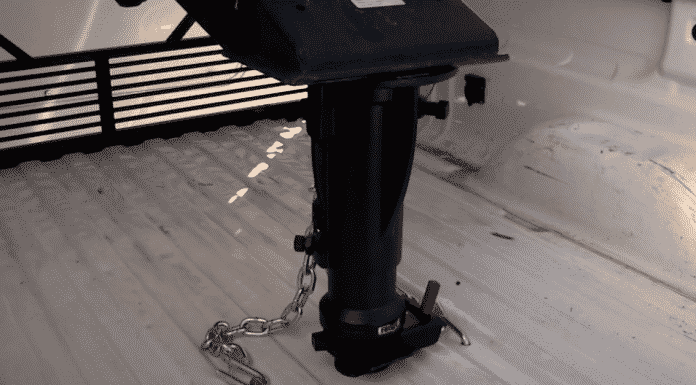Thinking about upgrading from a fifth wheel to a gooseneck trailer? You’re not alone. Many RV enthusiasts are realizing the unique advantages of making this switch. This guide provides crucial insights into the conversion, covering everything from the benefits and prerequisites to the installation and maintenance tips. Let’s delve into the world of RV upgrades and discover how a gooseneck setup can redefine your travel experience.
Understanding the Shift: Why Gooseneck?
Before diving into the nitty-gritty, it’s essential to understand what a gooseneck trailer is and why it has become a favored choice for many RV owners. Gooseneck trailers are characterized by a protruding neck that connects to the truck bed, offering superior stability and weight distribution. This design considerably enhances towing performance and offers a remarkable shift in driving dynamics compared to traditional fifth wheel setups.
But the advantages don’t stop there. The gooseneck configuration often allows for improved maneuverability, particularly in tight spaces. This attribute is a game-changer for those who frequently navigate congested areas or seek out remote camping spots that may not accommodate oversized trailers. The versatility gained from this upgrade can shift your perspective on road trips and camping excursions.
Benefits of Converting to Gooseneck
- Enhanced Stability: The stability offered by a gooseneck setup can significantly reduce the swaying you experience on the road. This feature can provide peace of mind during long drives.
- Increased Cargo Space: The design of goosenecks often permits more available space within the trailer, allowing for better organization and packing strategies.
- Improved Action on Uneven Terrain: If you venture off the beaten path, a gooseneck trailer generally holds up better on uneven or rugged terrain.
- Flexibility: You have the option to disconnect easily from the trailer when you need to use your vehicle separately. This autonomy can enhance your overall camping experience.
- Superior Towing Capacity: Many gooseneck setups allow for a higher towing capacity, enabling you to carry heavier loads with confidence.
With these enticing benefits in mind, you might be eager to start the conversion process—but hold on! There’s more to consider before diving in.
Prerequisites for Conversion
Converting from a fifth wheel to a gooseneck requires careful planning and preparation. Start by assessing the structural integrity of your existing RV. Modifications must adhere to safety standards to ensure your vehicle can handle the new configuration. Consult your vehicle’s manual and consider discussing your intentions with a professional.
Next, you’ll need to acquire the right gooseneck hitch. Several options are available, from sliding hitches for short beds to fixed hitches for long beds. Understanding your specific truck model and the dimensions of the gooseneck setup is paramount in ensuring a successful conversion.
Moreover, you may require additional hardware for the installation. This could include braces, adaptors, and safety chains that comply with industry regulations. Failing to account for these components can lead to complications down the line—so don’t overlook this step!
The Conversion Process
The installation of a gooseneck hitch involves precise steps that can ensure a successful transition. If you’re not comfortable working with heavy machinery or complicated components, consider hiring a professional. However, if you’re a hands-on individual, here’s a brief overview of the general process:
- Gather Your Tools: You’ll need basic hand tools, a measuring tape, and possibly a drill for installation.
- Measure Twice, Cut Once: Accurate measurements will dictate where to place the gooseneck hitch. Remember, even an inch off can create complications.
- Install the Base Plate: This component is crucial for the hitch to function correctly. Make sure it’s secure and aligned.
- Mounting the Hitch: Follow the manufacturer’s instructions to mount the gooseneck hitch. Ensure that it feels solid and stable upon completion.
- Compatibility Check: Test the connection with the gooseneck trailer, ensuring that everything fits smoothly and can handle weight without instability.
Maintenance Tips for Your Gooseneck Setup
Once you’ve converted and are off on your adventures, maintenance becomes paramount. Regularly inspect the hitch for signs of wear or fatigue, particularly if you frequently navigate rough terrains. Lubrication is essential for moving parts to ensure smooth operation, and periodic checks should be scheduled to address any potential issues before they escalate.
Additionally, keep an eye on your tires, brakes, and lights. The last thing you want is for technical difficulties to distract from the excitement of your journeys. Proper maintenance not only enhances safety but also prolongs the life of your RV setup, allowing you to create cherished memories for years.
Conclusion: Embrace the Shift
Converting from a fifth wheel to a gooseneck trailer is more than just an upgrade; it’s a paradigm shift in how you experience travel. The enhanced stability, maneuverability, and flexibility can redefine your journeys, allowing you to explore countless destinations with confidence. Whether you’re a seasoned RV aficionado or a newcomer eager for adventure, this conversion promises not just a change of mechanics but a reimagining of what’s possible on the open road. So gear up, take the plunge, and embrace the invigorating journey that awaits!
